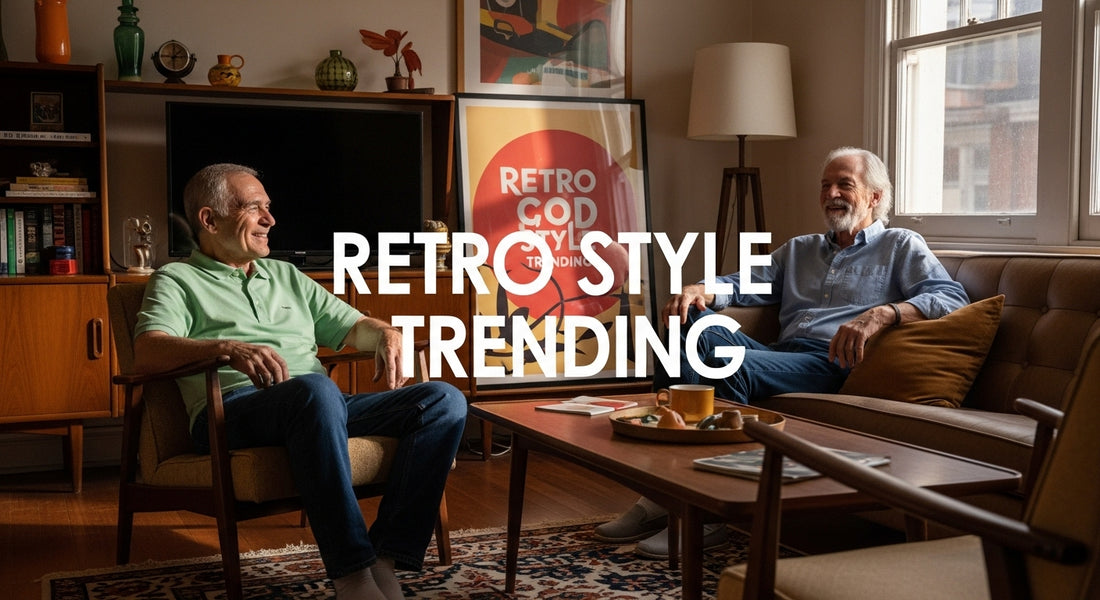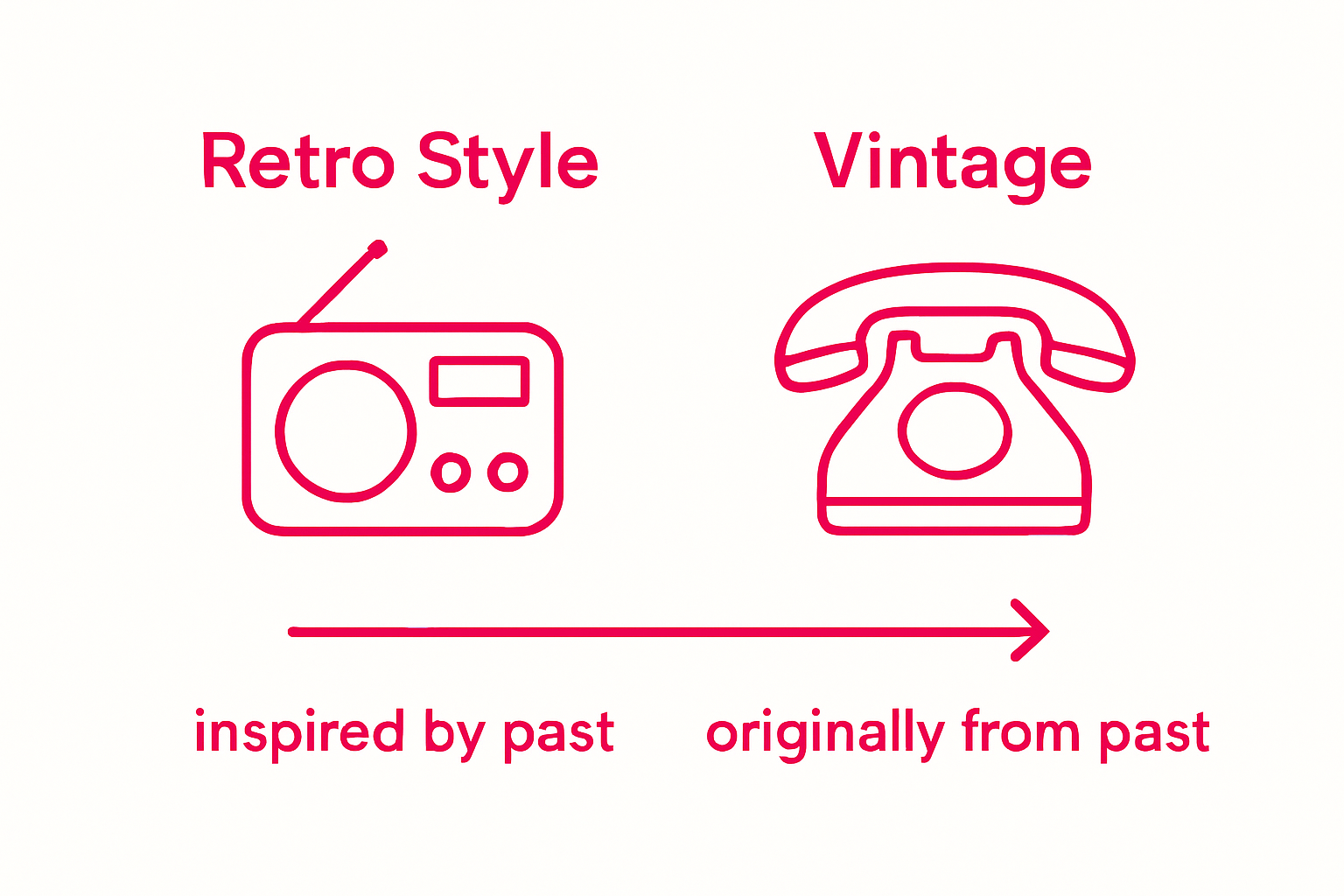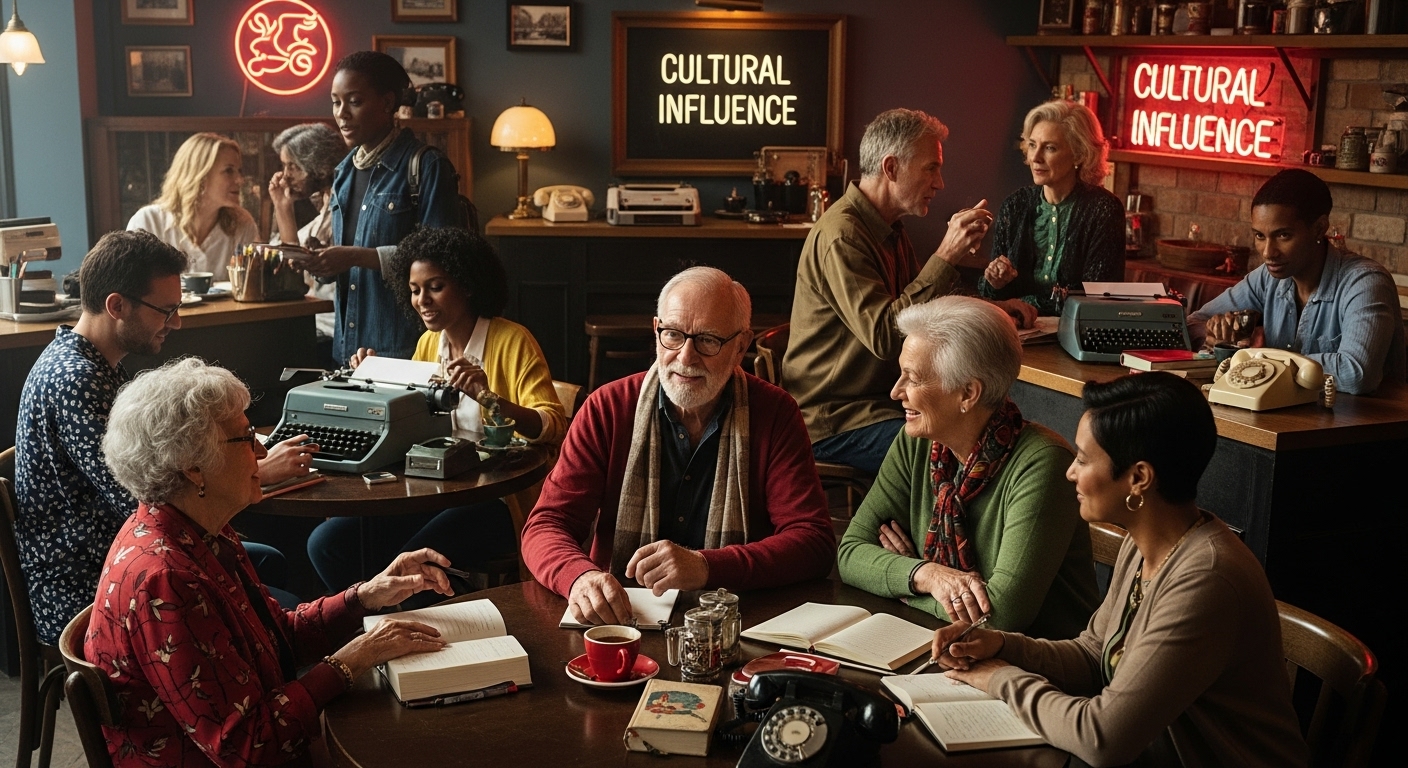
Understanding Why Retro Style is Trending in Modern Culture
Share
Retro style takes you straight back to the colours, shapes, and moods that defined the mid-20th century. People often think it is just old-fashioned decorating, but that’s not the story. The real surprise is how retro connects old-school charm to modern life, blending bold nostalgia with fresh, clever design. Research shows nostalgia can actually boost mood and strengthen modern identity. Suddenly, what seemed like just a vintage look becomes a powerful emotional experience, sparking new favourites out of familiar memories.
Table of Contents
- The Concept Of Retro Style: What Is It?
- The Nostalgic Pull: Why Retro Matters To Us
- Cultural Influences: How Retro Style Shapes Trends
- Practical Appeal: How Retro Fits Into Modern Lifestyle
- Key Elements Of Retro Style: Icons And Inspirations
Quick Summary
| Takeaway | Explanation |
|---|---|
| Retro style merges past and present | It captures the spirit of historical design while adapting it for modern aesthetics, serving as a bridge between eras. |
| Nostalgia enhances emotional connections | Engaging with retro aesthetics promotes emotional regulation, identity reinforcement, and continuity amidst societal changes. |
| Retro style influences cultural narratives | This design approach challenges dominant norms, celebrating marginalized experiences and creating alternative narratives through visual language. |
| Practical advantages of retro design | It combines durability, timeless appeal, and emotional connections, making retro objects a practical lifestyle choice for consumers. |
| Curate personal aesthetics with retro elements | Individuals can create unique environments by integrating retro designs, blending historical and contemporary influences into their spaces. |
The Concept of Retro Style: What Is It?
Retro style represents a nostalgic celebration of design elements and aesthetic characteristics from past decades, typically spanning the mid-20th century. Unlike vintage, which refers to original items from a specific historical period, retro captures the essence and visual language of those eras through contemporary reinterpretation and reimagination.
Below is a comparison table highlighting the difference between retro and vintage style as discussed in the article, making clear how each concept is uniquely defined.
| Style | Definition | Example Approach | Role in Modern Design |
|---|---|---|---|
| Retro | Contemporary reinterpretations inspired by past decades, especially mid-20th century | Uses modern materials and technology to mimic past looks | Bridges historical aesthetics with present-day needs |
| Vintage | Original items produced during a specific historical period | Features authentic period objects | Preserves and showcases original design authenticity |

Defining Retro: More Than Just Old
Retro style goes beyond mere reproduction. It involves capturing the spirit, emotional resonance, and cultural significance of past design movements. This approach transforms historical aesthetics into modern contexts, creating a bridge between historical authenticity and contemporary sensibilities. Read more about the nuanced differences between retro and vintage.
The core characteristics of retro style include:
- Bold color palettes reminiscent of specific decades
- Geometric and streamlined design elements
- Playful typography and graphic treatments
- Nostalgic references to technological and cultural iconography
Cultural Significance of Retro Aesthetics
According to research examining South African architectural styles, retro design often represents more than visual appeal. It serves as a cultural commentary, reflecting societal shifts, technological advancements, and collective memory. By reimagining past design languages, retro style allows contemporary audiences to reconnect with historical narratives and reinterpret them through modern perspectives.
Retro style functions as a powerful form of visual storytelling, transforming historical design elements into living, breathing aesthetic experiences that resonate across generations. It celebrates the creativity, innovation, and cultural dynamism of previous eras while simultaneously speaking to current design sensibilities and technological capabilities.
The Nostalgic Pull: Why Retro Matters to Us
Nostalgia represents a powerful psychological mechanism through which individuals connect with past experiences, emotions, and cultural memories. Retro style emerges as a tangible manifestation of this emotional landscape, offering people a comforting bridge between their personal histories and contemporary realities.
Psychological Dimensions of Nostalgic Attraction
The attraction to retro style goes far beyond aesthetic preferences. Learn more about how vintage tech drives modern consumer trends. According to research on consumer psychology, nostalgia serves multiple psychological functions that explain our deep connection to retro aesthetics:
This table summarises the psychological functions of nostalgia as outlined in the article, providing a clear view of how retro style connects with emotional and cultural needs.
| Psychological Function | Description |
|---|---|
| Emotional regulation | Boosts mood and provides comfort, especially during uncertain times |
| Reinforcement of identity | Strengthens both personal and cultural sense of self |
| Sense of continuity | Connects past experiences to present contexts within changing social environments |
| Psychological comfort | Offers familiarity and security amidst rapid social transformations |
- Emotional regulation and mood enhancement
- Reinforcement of personal and cultural identity
- Creating a sense of continuity in rapidly changing social environments
- Providing psychological comfort during periods of uncertainty
Cultural and Personal Identity Reconstruction
Retro style operates as more than a mere design trend. It functions as a complex narrative tool through which individuals reconstruct and reinterpret their cultural experiences. By engaging with retro aesthetics, people symbolically navigate complex emotional territories, reconnecting with collective memories and personal histories.
This nostalgic engagement allows individuals to process societal transformations, understand generational shifts, and create meaningful connections between past and present experiences. Retro style becomes a form of cultural dialogue, enabling people to explore and celebrate the nuanced layers of historical and personal narratives.
Cultural Influences: How Retro Style Shapes Trends
Retro style transcends mere aesthetic preference, functioning as a powerful cultural language that communicates complex social narratives and generational experiences. By reimagining historical design elements, retro trends become sophisticated mechanisms for cultural expression and collective memory transmission.
Subcultures and Identity Formation
Explore how vintage technology intersects with modern design trends, retro style emerges as a dynamic platform for identity construction. According to research examining South African urban subcultures, style becomes a critical tool for reinterpreting cultural experiences and challenging dominant narratives.
Key aspects of retro style in cultural trend formation include:
- Challenging mainstream aesthetic norms
- Providing alternative narrative spaces
- Celebrating marginalized cultural experiences
- Creating visual languages of resistance and transformation
Global and Local Intersections
Retro style operates as a nuanced dialogue between global design movements and local cultural contexts. It represents more than visual recycling technical reproduction. Instead, it becomes a sophisticated mechanism for cultural translation, where historical design elements are reinterpreted through contemporary sensibilities.
This dynamic process allows communities to engage with their historical narratives critically, transforming nostalgic references into powerful statements of cultural resilience and creative reimagination. Retro style thus becomes a multilayered communication platform where past and present continuously negotiate meaning, identity, and social representation.

Practical Appeal: How Retro Fits into Modern Lifestyle
Retro style represents more than aesthetic nostalgia. It has evolved into a sophisticated lifestyle choice that seamlessly integrates historical design principles with contemporary functional requirements, offering practical solutions that resonate across different generations and social contexts.
Functional Design and Aesthetic Efficiency
Discover how vintage gadgets transform modern tech experiences, retro design principles prioritize purposeful aesthetics. According to research on consumer lifestyle trends, modern consumers increasingly value design approaches that combine visual appeal with practical functionality.
Key practical advantages of retro style integration include:
- Durability and quality craftsmanship
- Timeless design that transcends temporary fashion trends
- Emotional connection with functional objects
- Sustainable consumption through long-lasting product design
Adaptive Lifestyle Integration
Retro style operates as a flexible framework for personal expression, allowing individuals to curate living spaces and personal aesthetics that blend historical references with contemporary needs. This approach enables people to create environments that feel simultaneously familiar and innovative, bridging generational design languages.
By strategically incorporating retro elements, individuals can construct lifestyle narratives that celebrate historical design intelligence while meeting modern functional requirements. The practical appeal lies not just in aesthetic reproduction, but in reimagining historical design principles to solve contemporary lifestyle challenges.
Key Elements of Retro Style: Icons and Inspirations
Retro style emerges from a complex tapestry of cultural moments, technological evolutions, and design philosophies that transcend mere aesthetic reproduction. It represents a nuanced dialogue between historical visual languages and contemporary interpretations, drawing inspiration from pivotal cultural and technological milestones.
Design Archetypes and Visual Signatures
Explore innovative branding strategies for retro tech enthusiasts, retro style draws from distinctive design archetypes that capture specific historical moments. According to research from Durban University of Technology, iconic design movements fundamentally shape our understanding of aesthetic evolution.
Central visual elements defining retro style include:
- Geometric shapes and symmetrical patterns
- Bold color palettes with high contrast
- Streamlined technological forms
- Playful typography with distinctive character
Cultural and Technological Inspirations
Retro style transcends visual mimicry, functioning as a sophisticated language of cultural memory and technological progression. Each design element serves as a narrative fragment, communicating complex stories about human innovation, social dynamics, and collective aspirations.
By reinterpreting historical design principles, retro style creates a dynamic conversation between past and present. It transforms nostalgic references into contemporary design vocabularies, allowing individuals to engage with historical aesthetic intelligence while simultaneously expressing modern sensibilities.
Bring Authentic Retro Nostalgia Into Your Everyday Life
Are you captivated by how retro style bridges memories from the past with modern design? This article uncovered the deep emotional pull of nostalgic trends and how they help us feel comforted and connected in today’s fast-changing world. If you find yourself searching for items that blend classic looks with real-world practicality, you are not alone. Many South Africans want more than simple imitation. They want authentic products that reflect both historical character and contemporary function.
At OnlyRetro, we transform your passion for retro aesthetics into living experiences. Discover carefully curated tech gadgets, classic-inspired watch collections, and vintage-style home decor that bring history—and comfort—right into your hands. If you value bold design and the emotional touch that only nostalgia can bring, do not let the feeling fade. Visit our landing page now to explore unique finds and uncover how you can make retro style part of your daily lifestyle. Shop today and give your space a true story worth sharing.
Frequently Asked Questions
What is retro style?
Retro style is a design aesthetic that captures the essence of past decades, particularly from the mid-20th century. It involves contemporary reinterpretations of historical design elements, distinguishing it from true vintage items.
Why do people feel nostalgic about retro style?
Nostalgia is a powerful psychological mechanism that helps individuals connect with past experiences and cultural memories. Retro style serves as a tangible manifestation of this emotional landscape, providing comfort and continuity in rapidly changing social environments.
How does retro style influence modern design trends?
Retro style influences modern design by reimagining historical design elements as mechanisms for cultural expression and collective memory. It challenges mainstream aesthetic norms and celebrates diverse cultural experiences, enriching contemporary aesthetics.
What are the practical benefits of incorporating retro style into modern living spaces?
Incorporating retro style offers practical benefits such as durability, timeless design, and emotional connections with functional objects. It allows individuals to create living spaces that feel both familiar and innovative while addressing contemporary lifestyle needs.